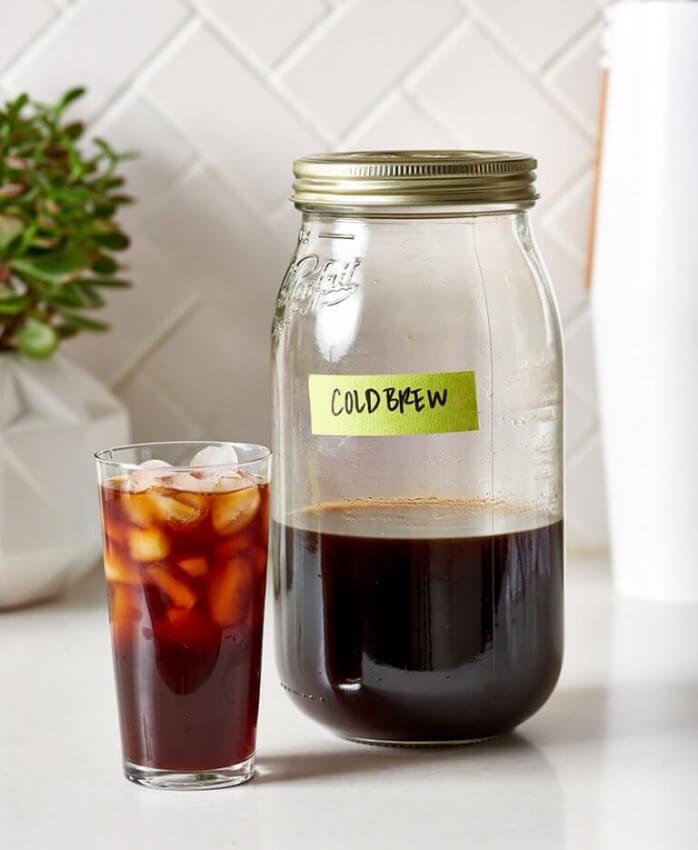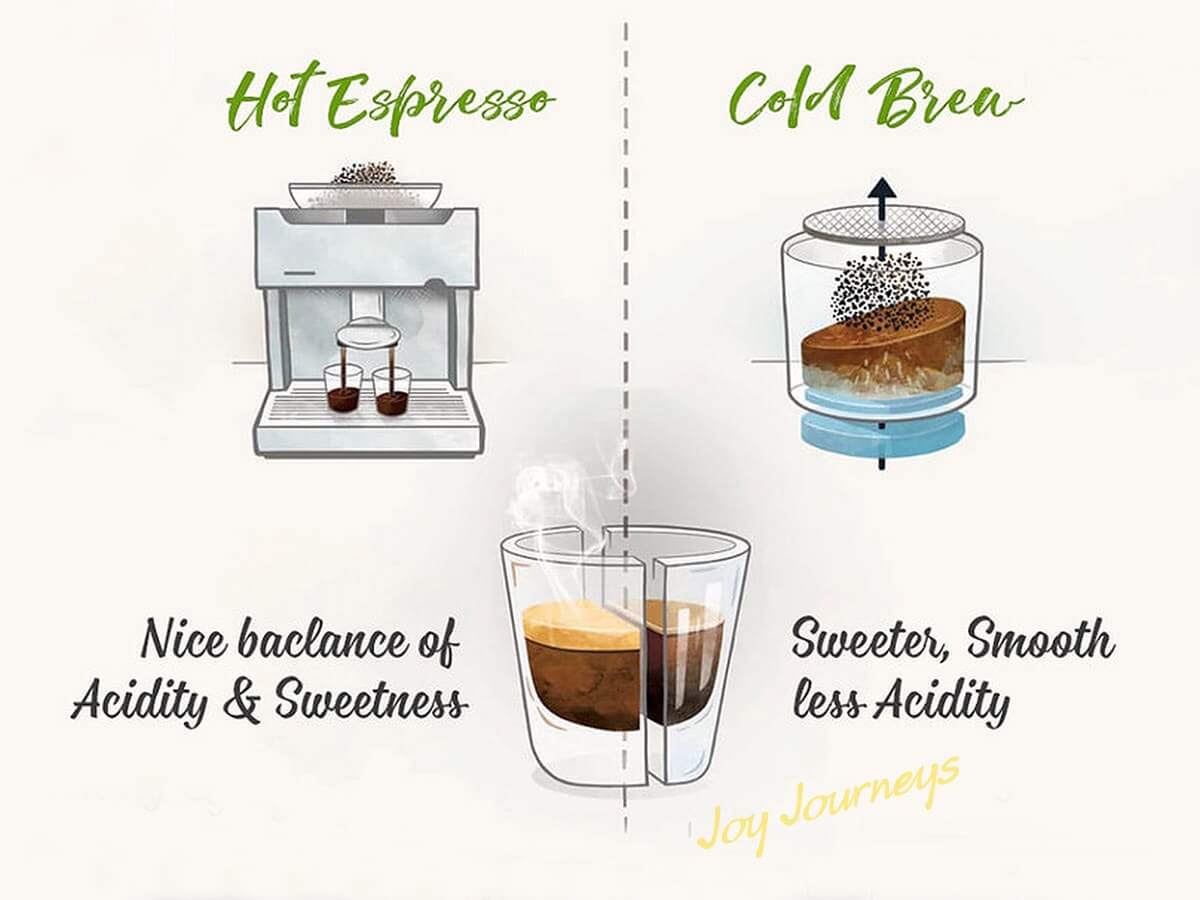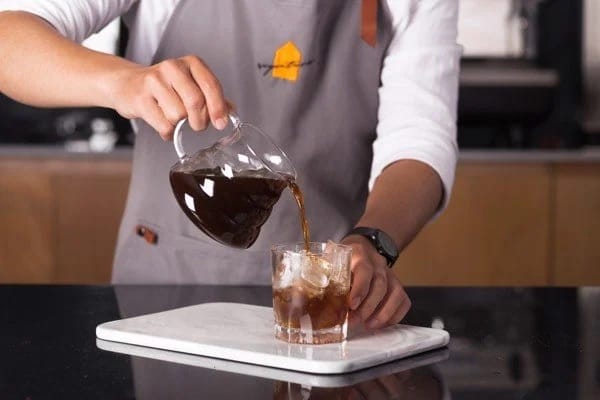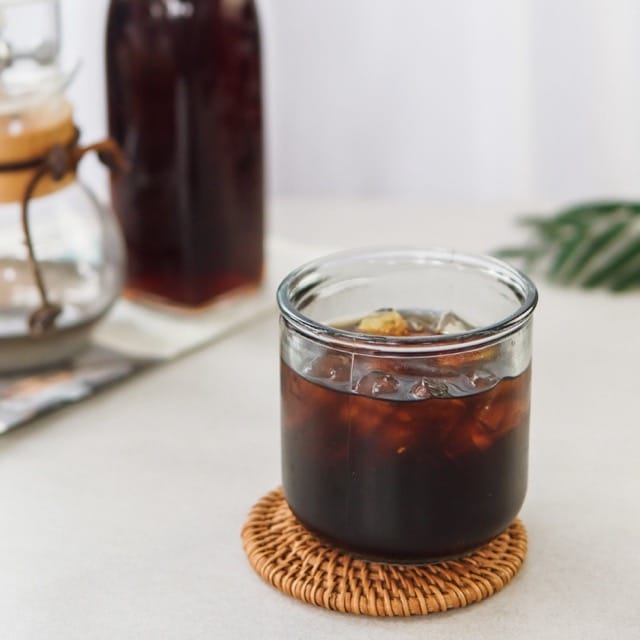Vietnam is famed for its fantastic cuisine, and Vietnamese coffee is one of the most popular drinks that you must try when visiting. Vietnamese coffee has a rich and distinct flavor due to the brewing procedure and a unique blend of beans.
Cold brew coffee has grown in popularity in recent years, and Vietnam has put its own take on the practice. Cold brew Vietnamese coffee is a light and delicious beverage that combines the characteristics of traditional Vietnamese coffee with current brewing techniques.
This article will delve into the cold brew Vietnamese coffee world and discover why it has become a must-try beverage for coffee enthusiasts. We will cover all you need to know about cold brew Vietnamese coffee, from its particular taste and brewing procedure to its popularity in Vietnam and around the world.
Contents
Cold Brew Vietnamese Coffee: A Smooth and Indulgent Blend of Two Brewing Methods
Cold brew coffee is made by steeping coffee grounds in cold water for an extended period of time, usually 12 to 24 hours. Cold brew coffee, unlike standard brewing methods that use hot water, relies on time and patience to extract the flavors and caffeine from the coffee beans. As a result, the coffee is smoother, less acidic, and less harsh, making it easy to drink and very flexible.

One of the primary advantages of cold brew coffee over hot brewed coffee is its decreased acidity. Because cold water extracts less acids from coffee beans, the flavor is less bitter and mellow. Furthermore, because of the slower extraction process, cold brew coffee has a smoother and fuller taste, allowing more nuanced flavors to emerge.
Vietnamese coffee, on the other hand, is known for its distinctive flavor profile. Traditionally made with a blend of robusta and arabica coffee beans, Vietnamese coffee is brewed using a small metal drip filter called a phin. The coffee is brewed directly into a cup containing sweetened condensed milk, which gives it a creamy and sweet flavor. The resulting coffee is then stirred and served over ice, making it a refreshing and indulgent drink.
When these two brewing methods are combined, the result is an exclusive and delightful beverage that blends the smoothness and low acidity of cold brew coffee with the creamy sweetness of Vietnamese coffee.
Comparing the Taste and Brewing Methods of Cold Brew and Traditional Vietnamese Coffee
When comparing the taste and brewing methods of cold brew and traditional Vietnamese coffee, it’s important to note that cold brew is typically smoother and less acidic than its Vietnamese counterpart.
This is due to the slow, cold extraction process used in making cold brew, which results in a softer taste. In contrast, traditional Vietnamese coffee is known for its robust and rich flavor, as well as its high caffeine content. This is because it is brewed using a hot drip method, which typically results in a stronger and more intense flavor.
Ultimately, the decision between cold brew and traditional Vietnamese coffee will depend on personal preferences and the desired flavor profile. Some may prefer the milder taste of cold brew, while others may prefer the bolder flavor of traditional Vietnamese coffee.
It is also worth noting that the brewing process can significantly impact the taste of coffee, and experimenting with different methods may yield different results.
Let’s savor the perfect blend of Egg Coffee.

How to Make Cold Brew Vietnamese Coffee?
Here are step-by-step instructions for making cold-brew Vietnamese coffee at home:
Ingredients:
- 1 cup coarsely ground coffee beans (a blend of robusta and arabica)
- 4 cups cold water
- 1/3 cup sweetened condensed milk
- Ice
Instructions:
- Combine the coarsely ground coffee beans and cold water in a large jar or pitcher. Stir to ensure the coffee grounds are fully saturated.
- Cover the jar or pitcher with a lid or plastic wrap and let it steep in the refrigerator for 12 to 24 hours.
- After steeping, strain the coffee through a fine mesh sieve or cheesecloth into a separate container. Discard the coffee grounds.
- Add 1-2 tablespoons of sweetened condensed milk in a glass, depending on your desired sweetness level.
- Using a phin, pour the cold brew coffee into the glass directly onto the sweetened condensed milk. Stir well to combine.
- Add ice to the glass and serve immediately.

Tips for choosing the right beans and equipment:
- Use a blend of robusta and arabica coffee beans for a more authentic taste of traditional Vietnamese coffee.
- Use coarsely ground coffee beans for cold brew, allowing for a slower extraction process and a smoother taste.
- Use a phin to make the coffee for a more authentic experience, although a French press or other types of coffee maker can also be used.
- Use good quality water to ensure the best possible taste.
With these simple steps and tips, you can enjoy a delicious and refreshing cold brew Vietnamese coffee at home.
Vietnamese espresso coffee is a unique and delicious beverage with a rich, sweet flavor from the sweetened condensed milk.
How Long Does Vietnamese Coffee Last?
When it comes to the shelf life of Vietnamese coffee, proper storage is key. Traditional Vietnamese coffee can be stored for several months if kept in a cool, dry place away from direct sunlight.
However, while the coffee may still be safe to drink after a few weeks, the flavor and aroma may begin to deteriorate. This is why it’s recommended to consume the coffee as soon as possible after it has been brewed for the best taste.
In comparison, cold brew coffee has a shorter shelf life and should ideally be consumed within a few days of being brewed. This is because the cold brewing process can result in a higher risk of bacterial growth, which can cause the coffee to spoil more quickly.

To maintain the quality of Vietnamese coffee, it’s important to store it properly. This means keeping it in an airtight container away from moisture and heat, which can hasten the deterioration of the flavor and aroma.
It’s also a good idea to grind the coffee right before brewing to ensure the freshest possible taste. By following these guidelines, it’s possible to enjoy the full flavor and aroma of Vietnamese coffee for as long as possible.
Conclusion
In closing, cold brew Vietnamese coffee is a delightful and refreshing drink with a distinct flavor profile from typical hot-brewed coffee. Cold brewing produces a smooth, sweet, and less acidic coffee ideal for hot summer days.
Making cold brew Vietnamese coffee at home is simple and accessible with the ideas and recommendations provided in this article. So why not prepare it yourself and savor the rich flavors of Vietnam from the comfort of your own home?


Related Posts
Saigon’s “Flower Market Replica”: Where To Find Them
Ho Chi Minh City’s floral charm is not limited to its bustling wholesale markets. Imagine wandering through a place where vibrant petals, fragrant blooms, and the spirit of traditional Vietnamese markets come alive—without the overwhelming crowds. A flower market replica captures that magic, blending the beauty of fresh flowers with the charm of a curated, […]
Is it Safe to Travel to Vietnam Right Now? A Complete 2025 Guide
Vietnam has emerged as one of Southeast Asia’s most captivating destinations, drawing millions of visitors annually with its rich culture, stunning landscapes, and incredible cuisine. However, many travelers still ask: Is it safe to travel to Vietnam right now? This comprehensive guide provides you with everything you need to know about Vietnam travel safety in […]
Ho Chi Minh Cu Chi Tunnels Tour: The Ultimate Guide
The Cu Chi Tunnels stand as one of Vietnam’s most remarkable historical sites, offering visitors a profound glimpse into the ingenuity and resilience displayed during the Vietnam War. For travelers, a Ho Chi Minh Cu Chi tunnels tour represents an essential experience that combines education, adventure, and deep cultural understanding. This comprehensive guide will help […]